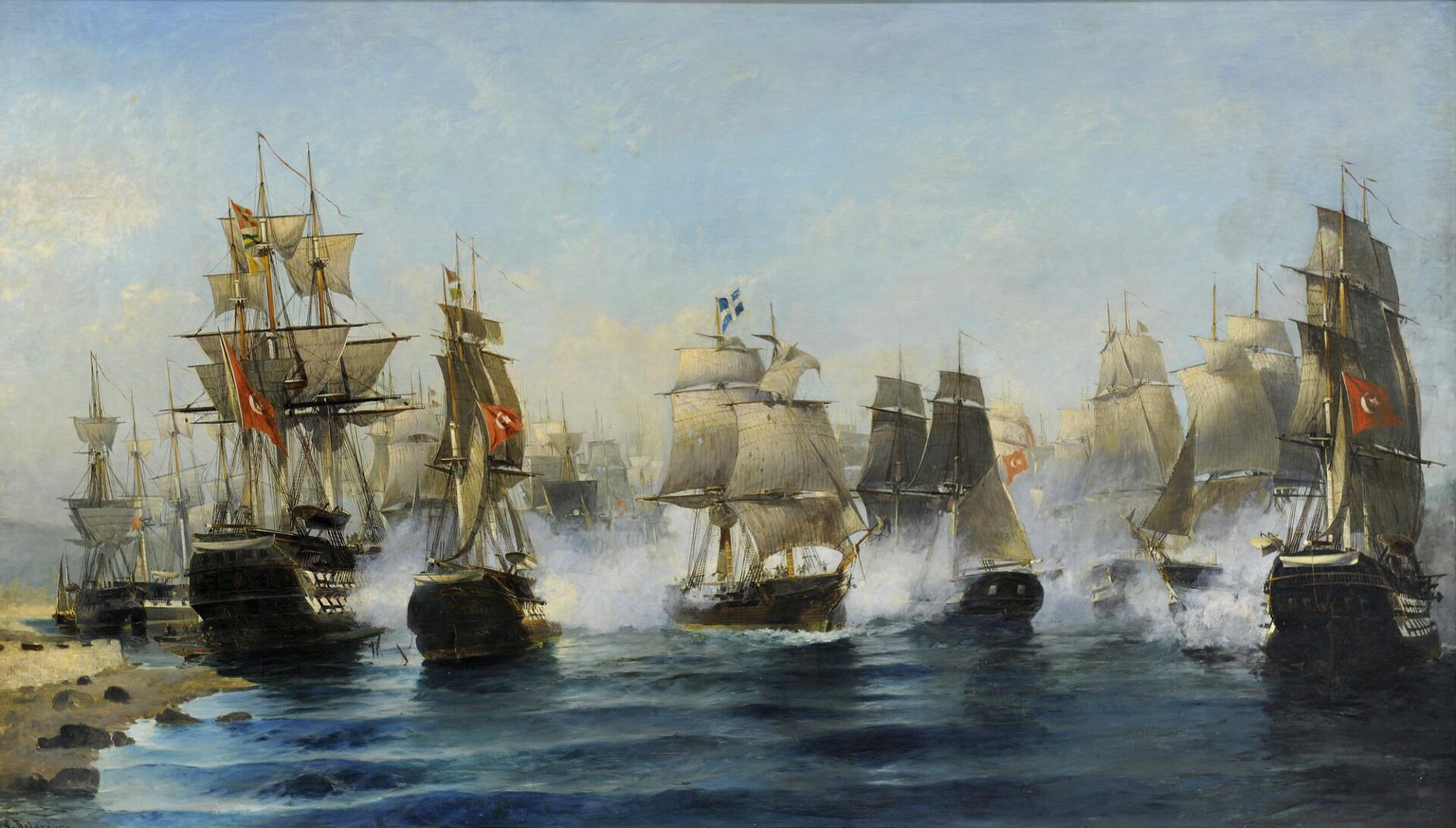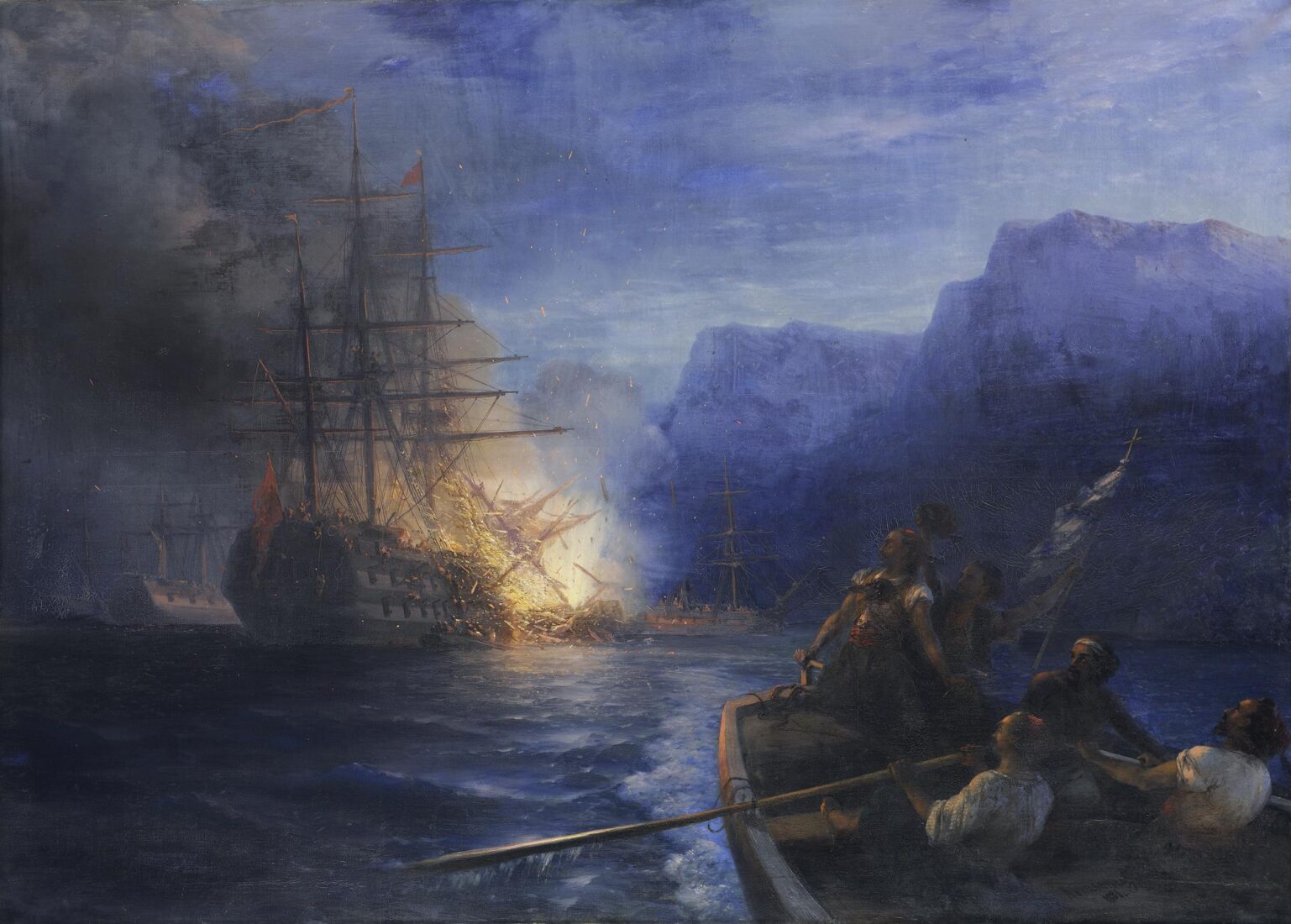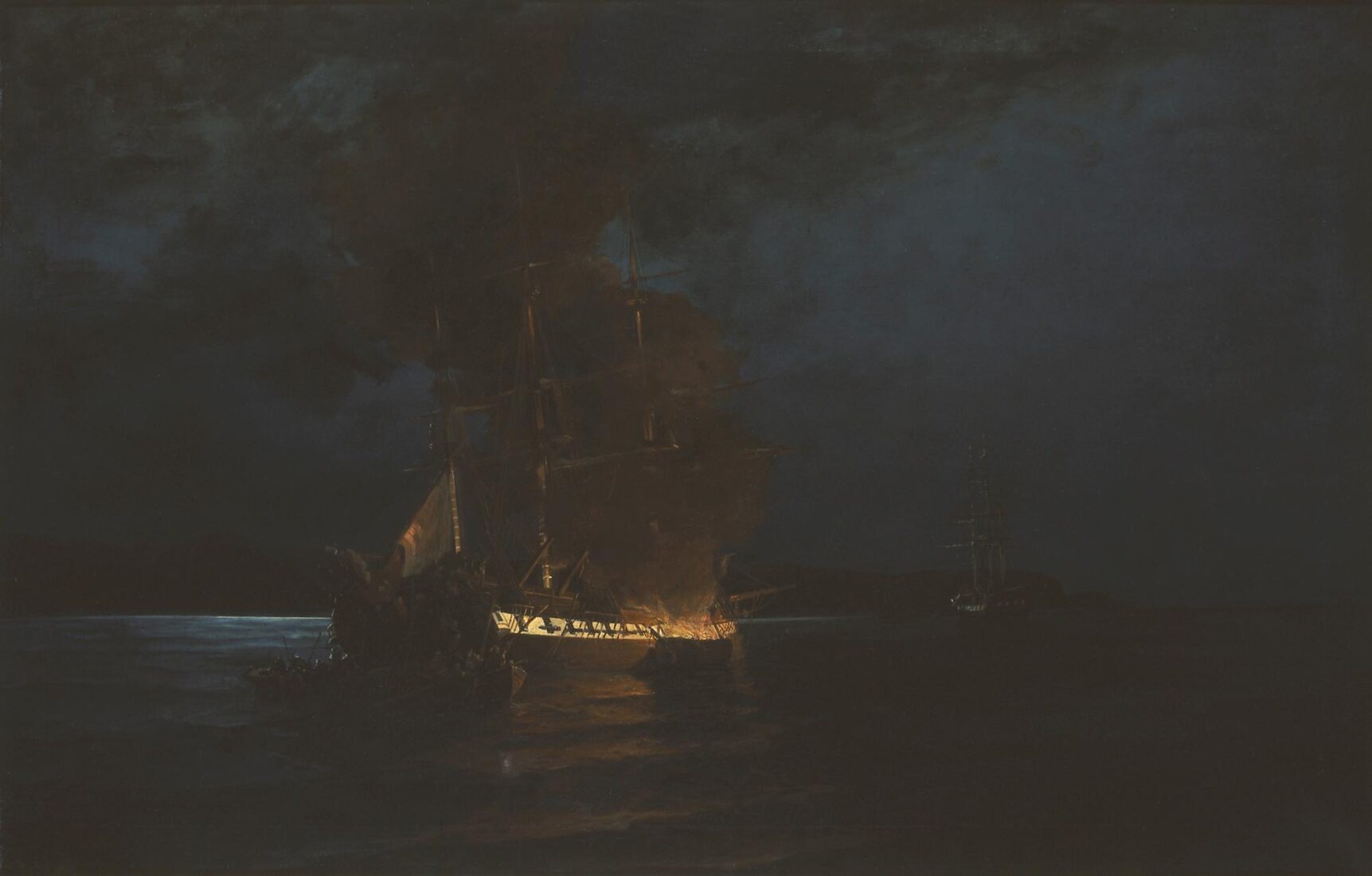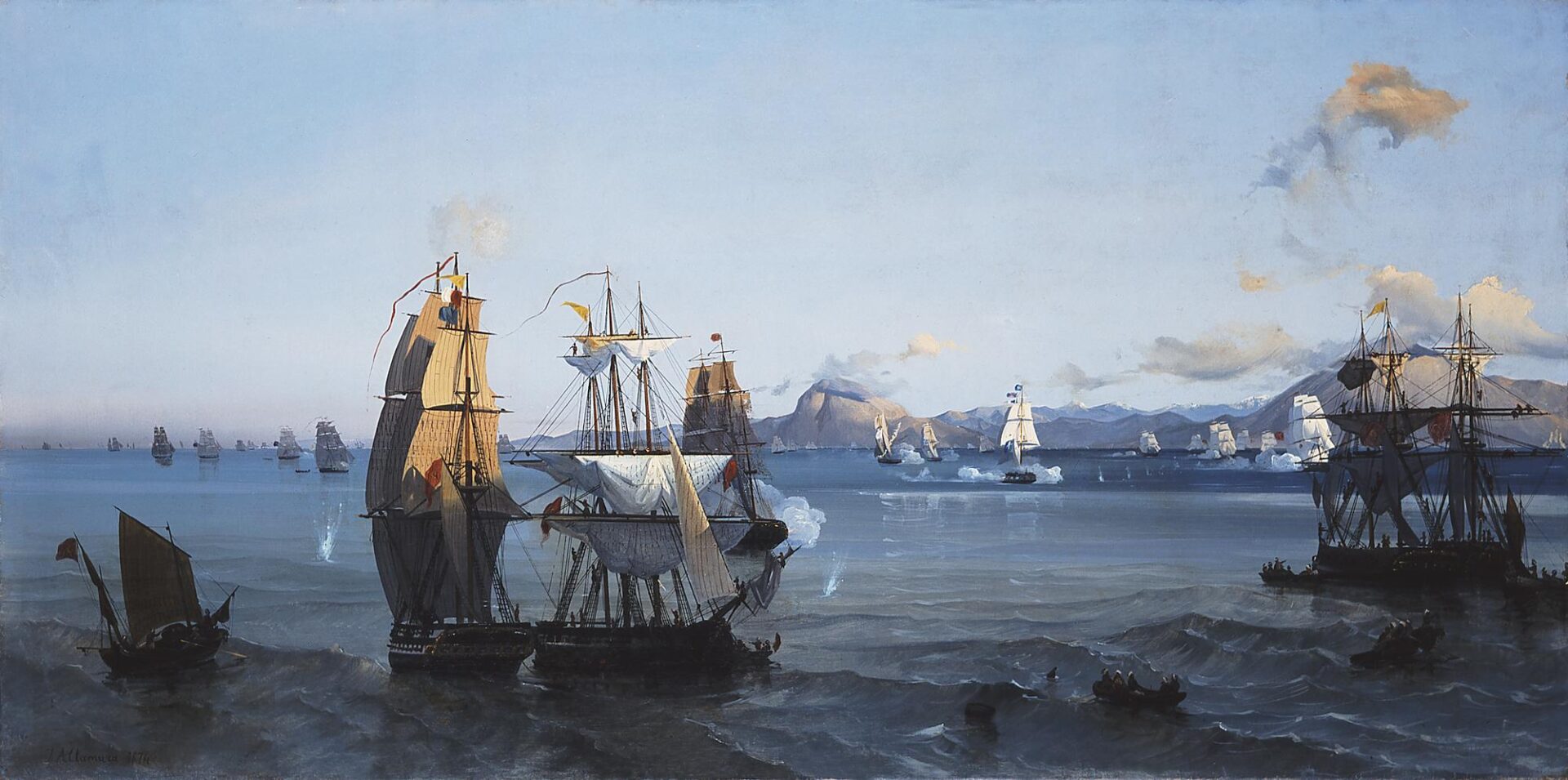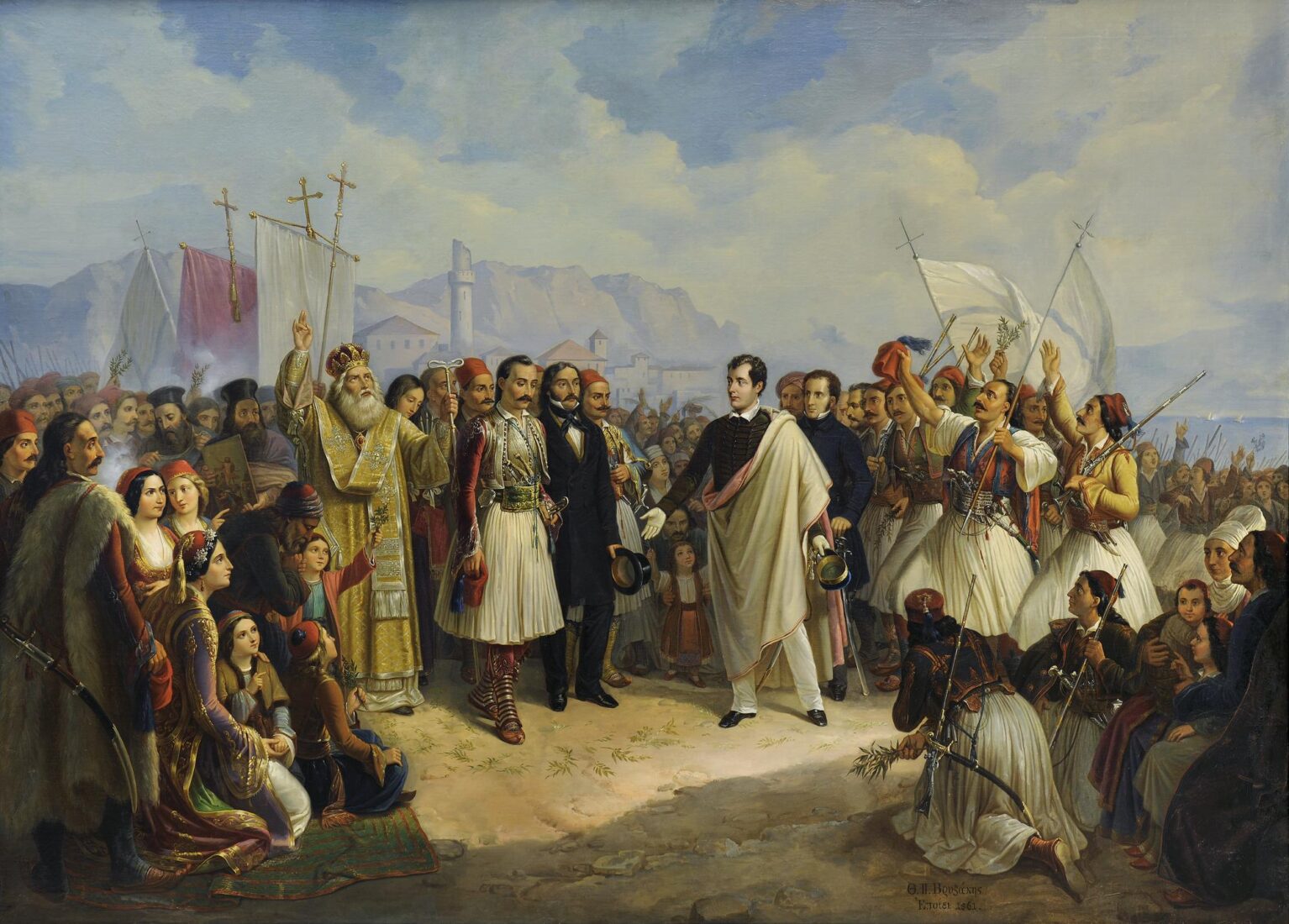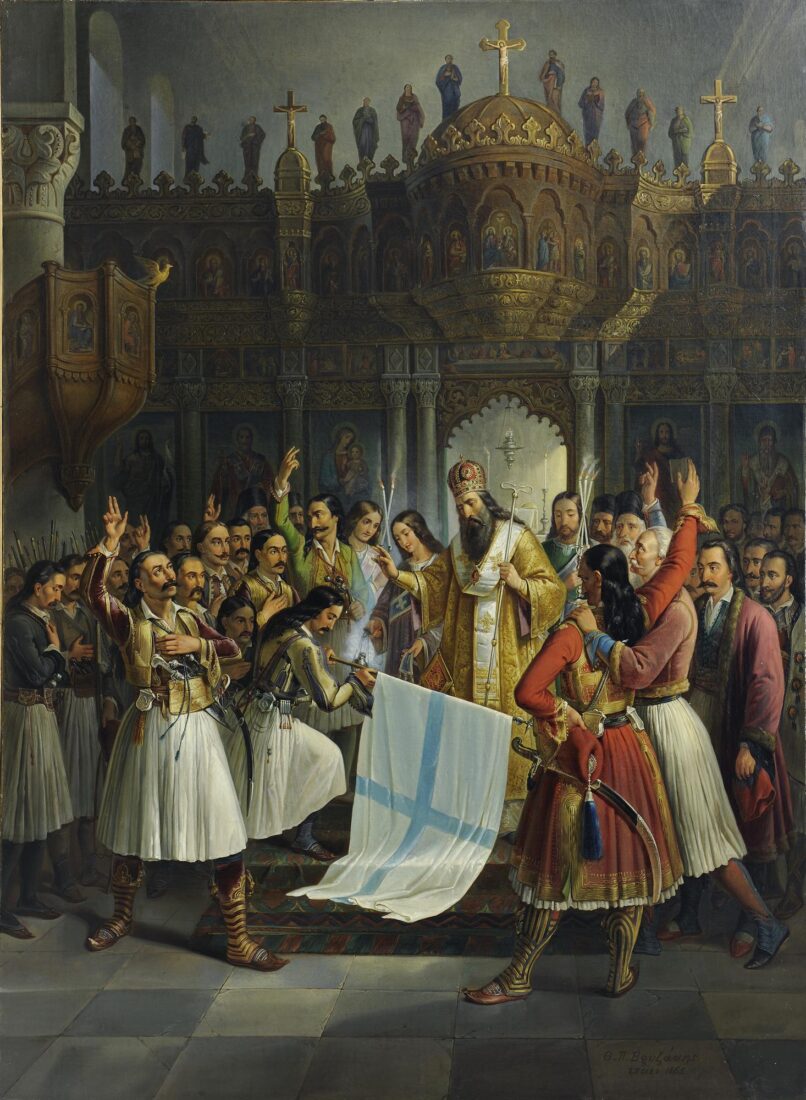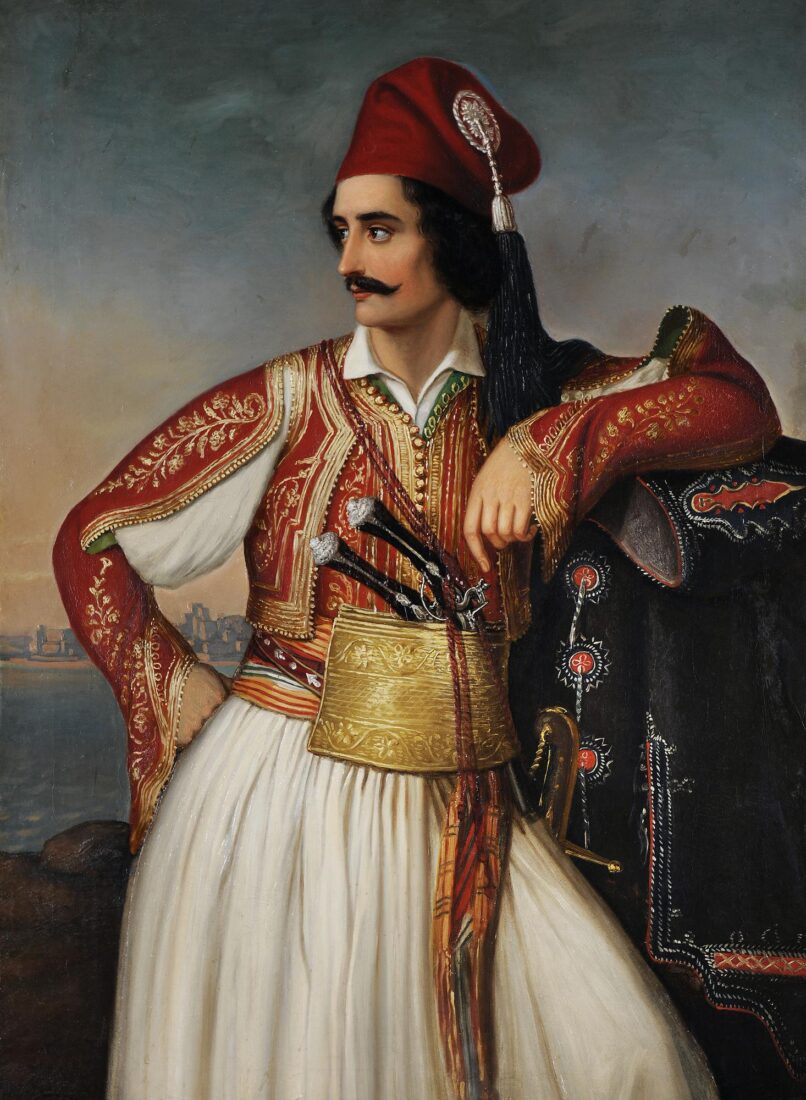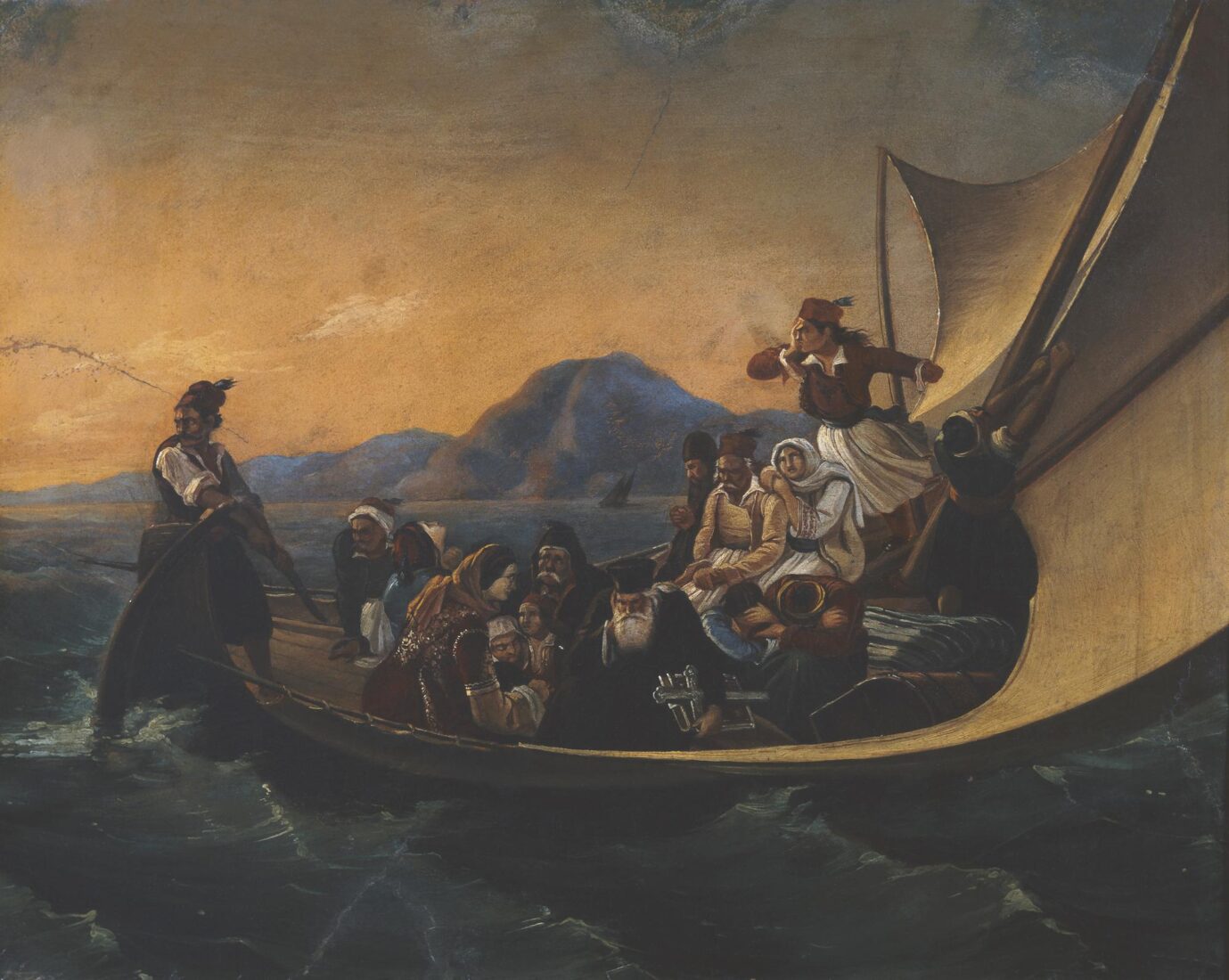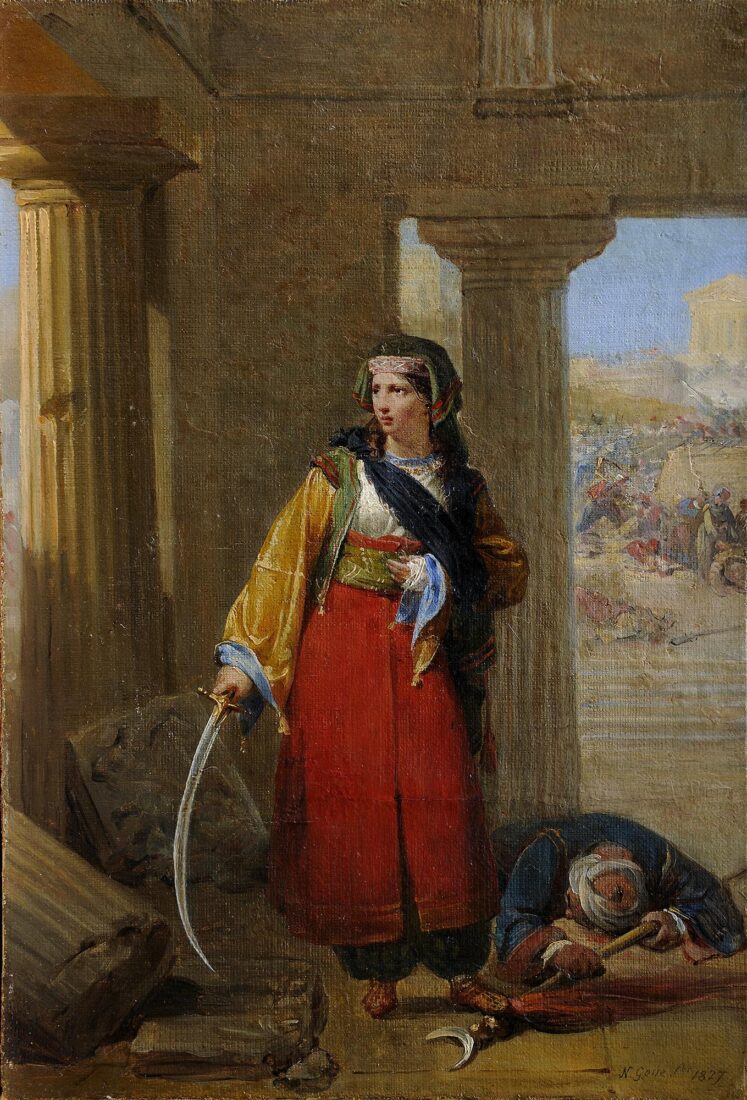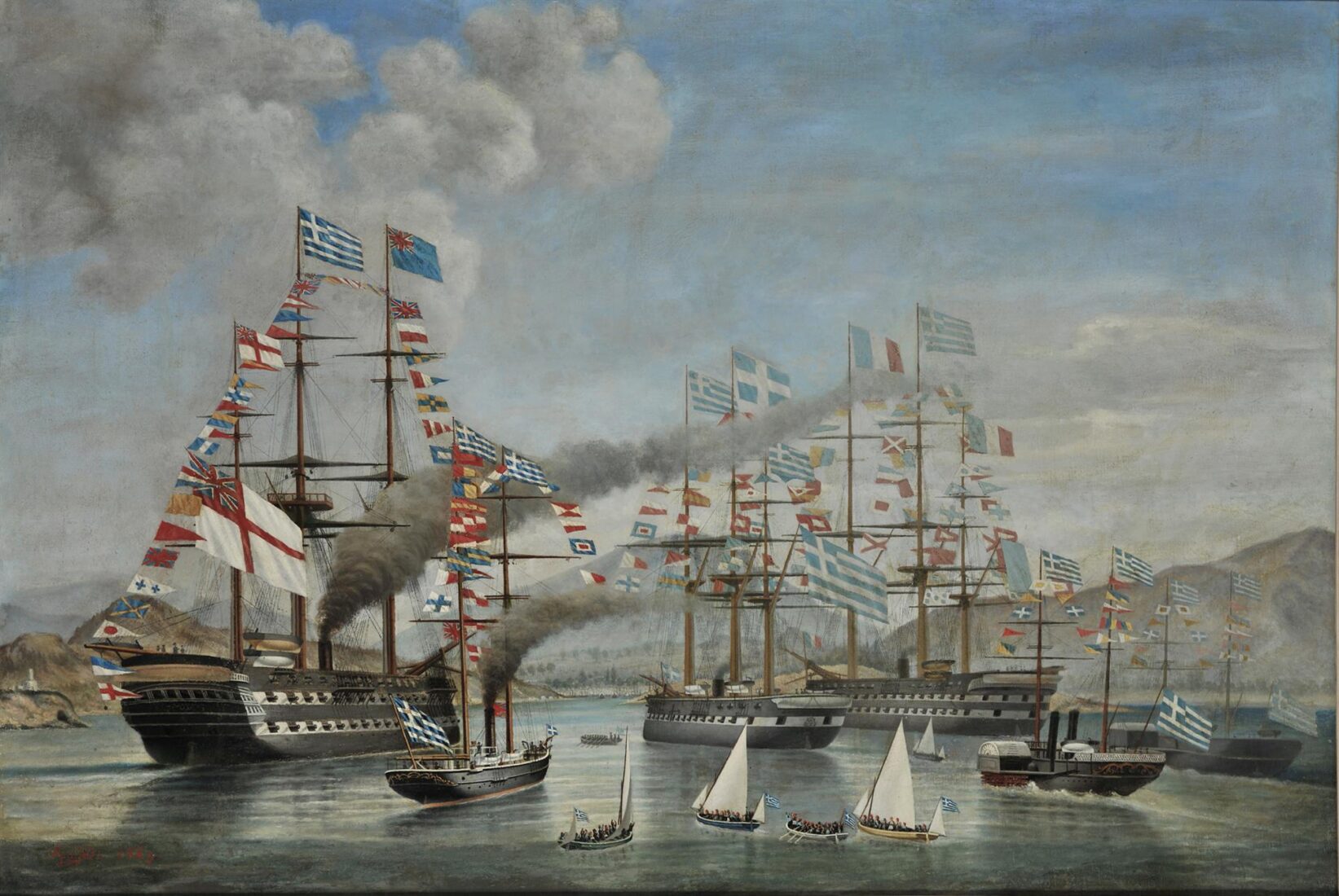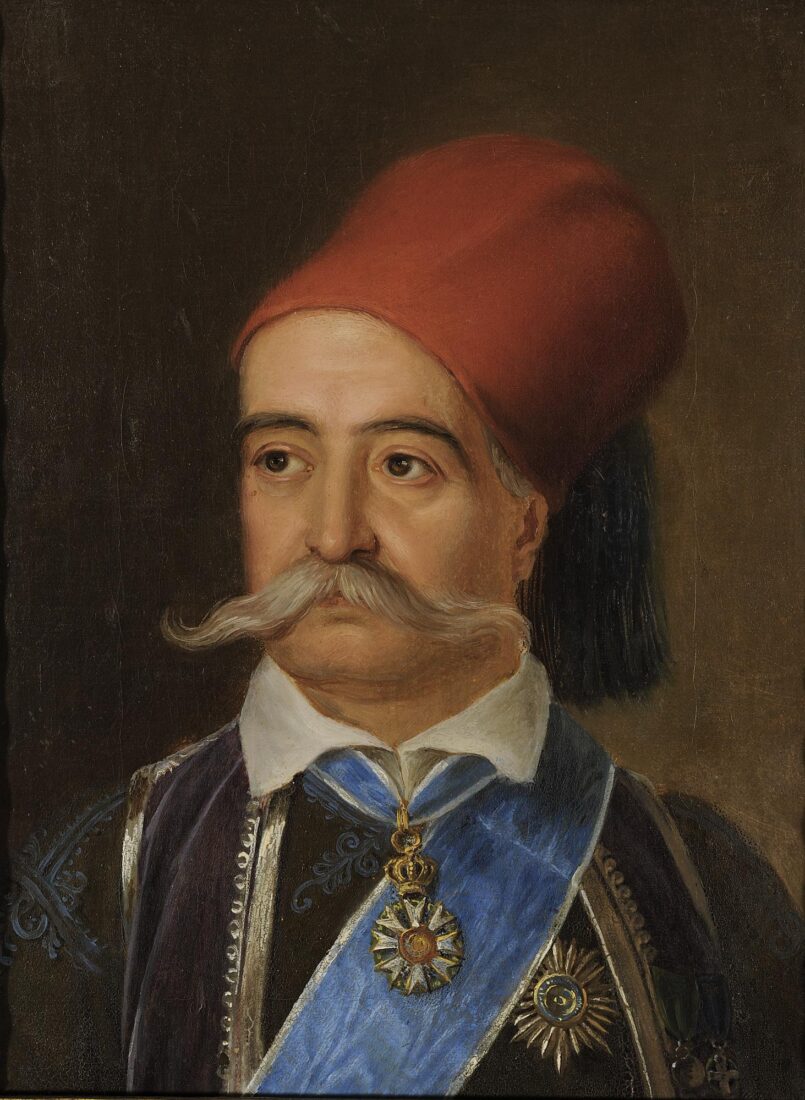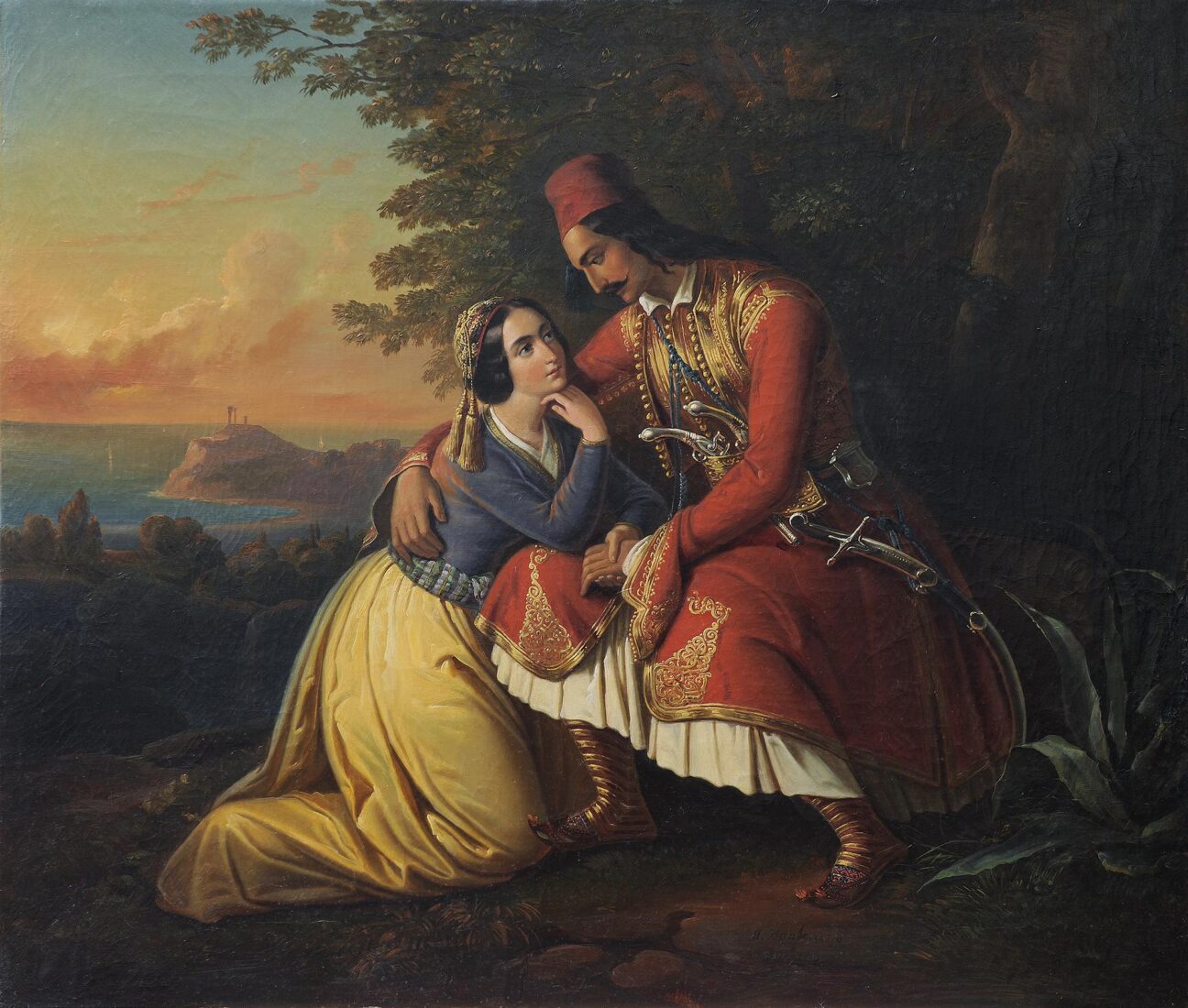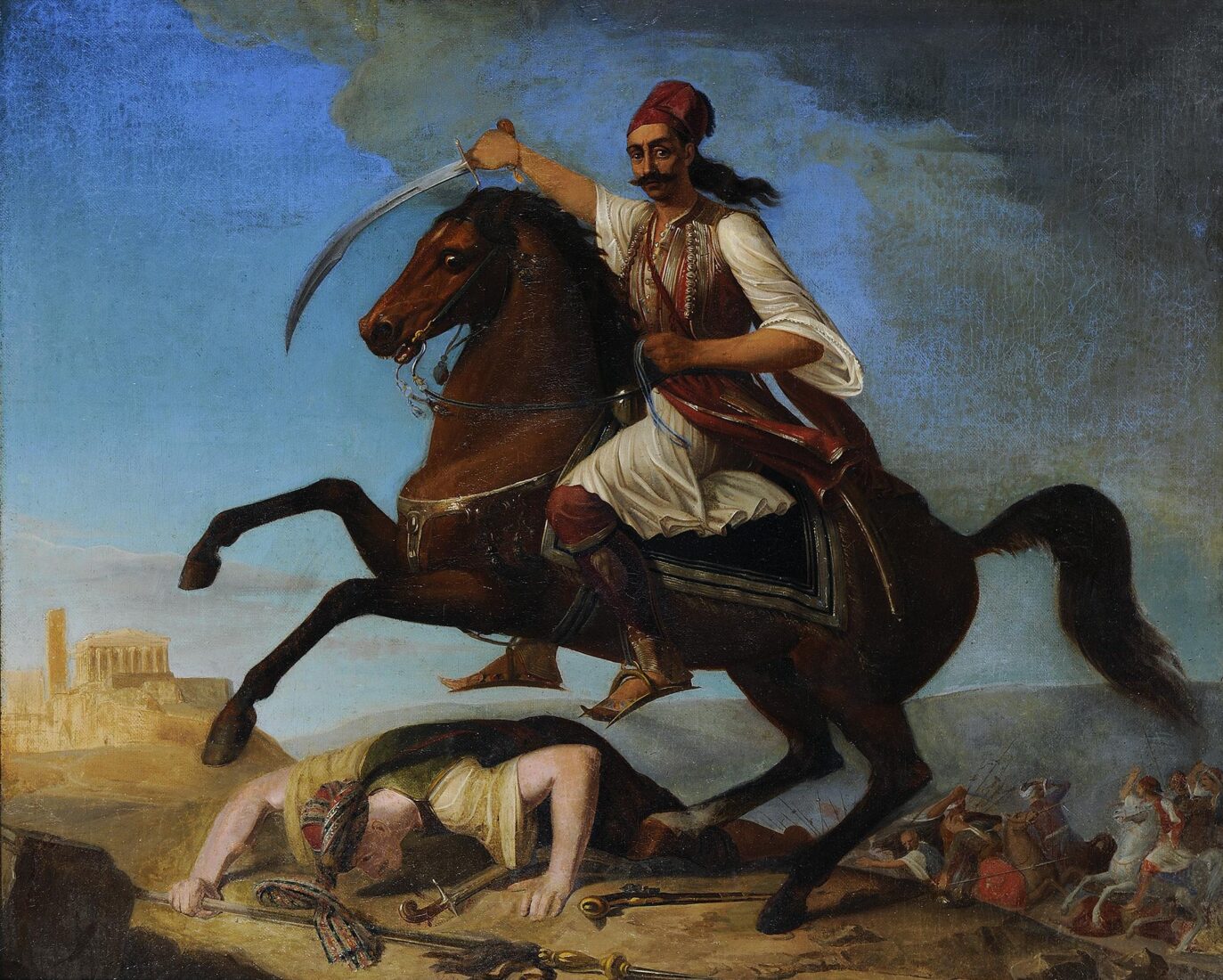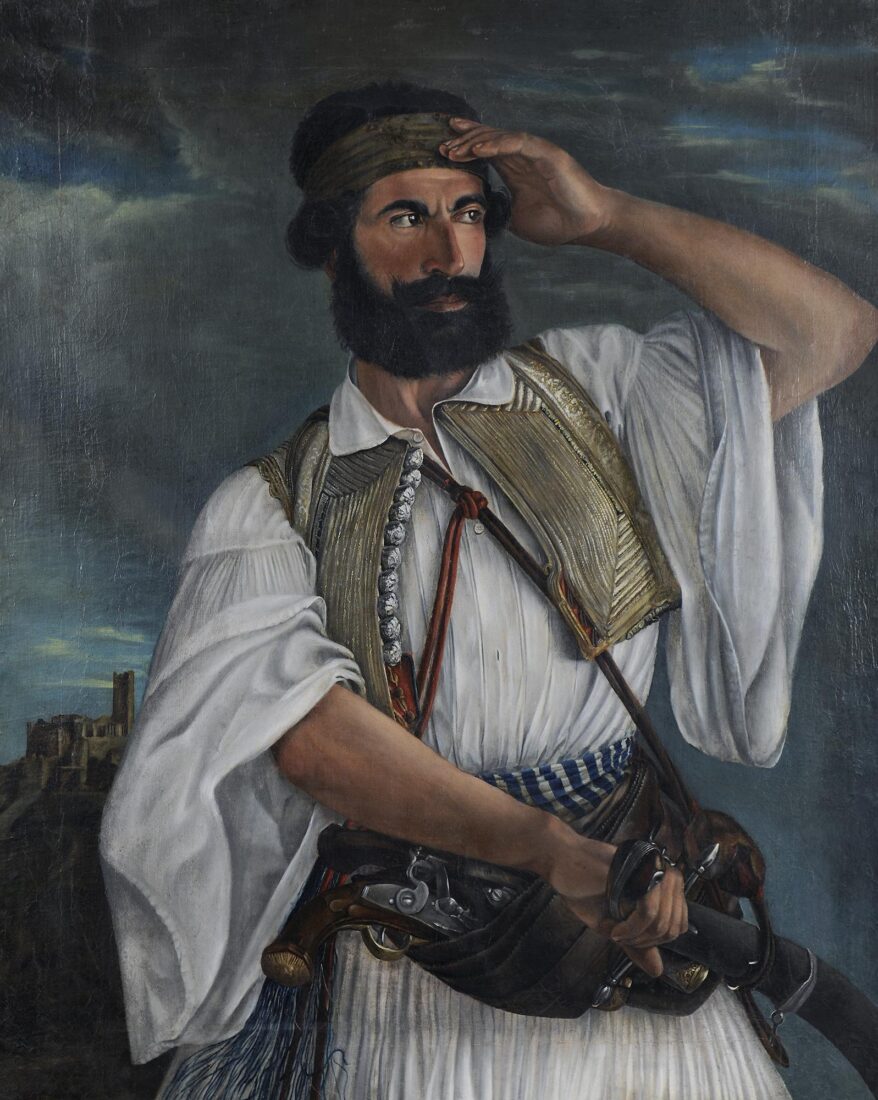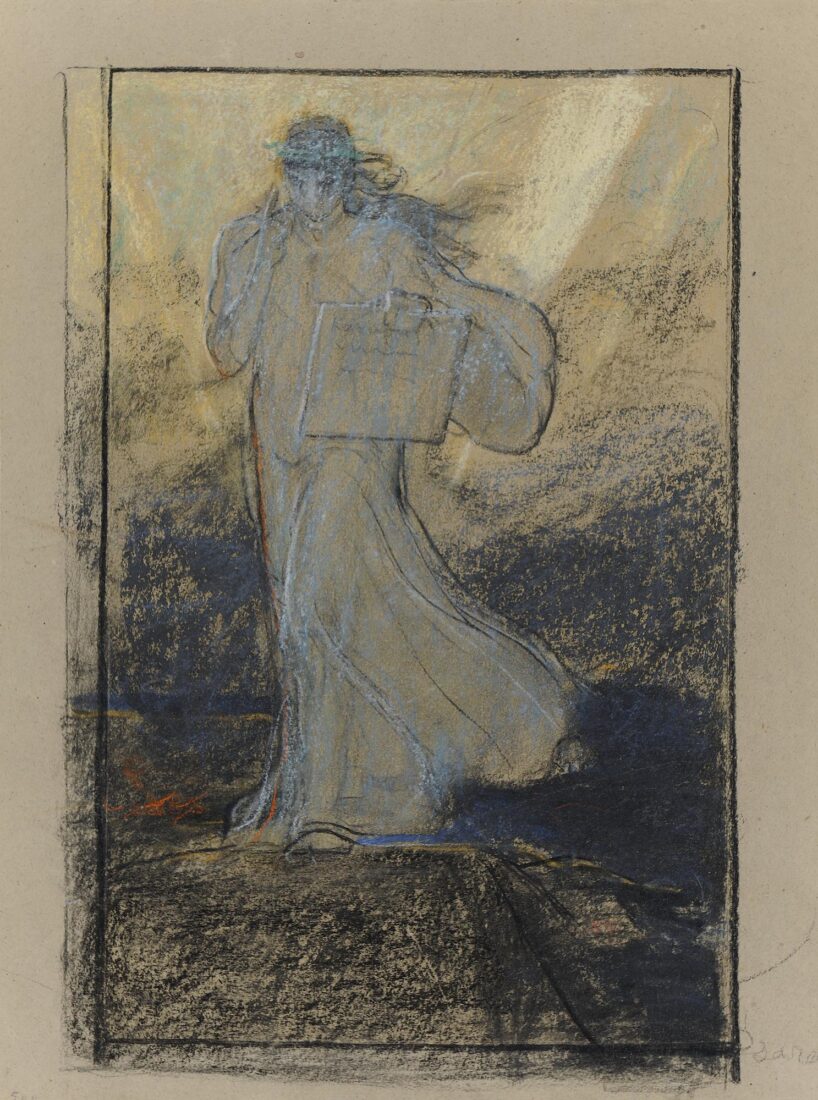

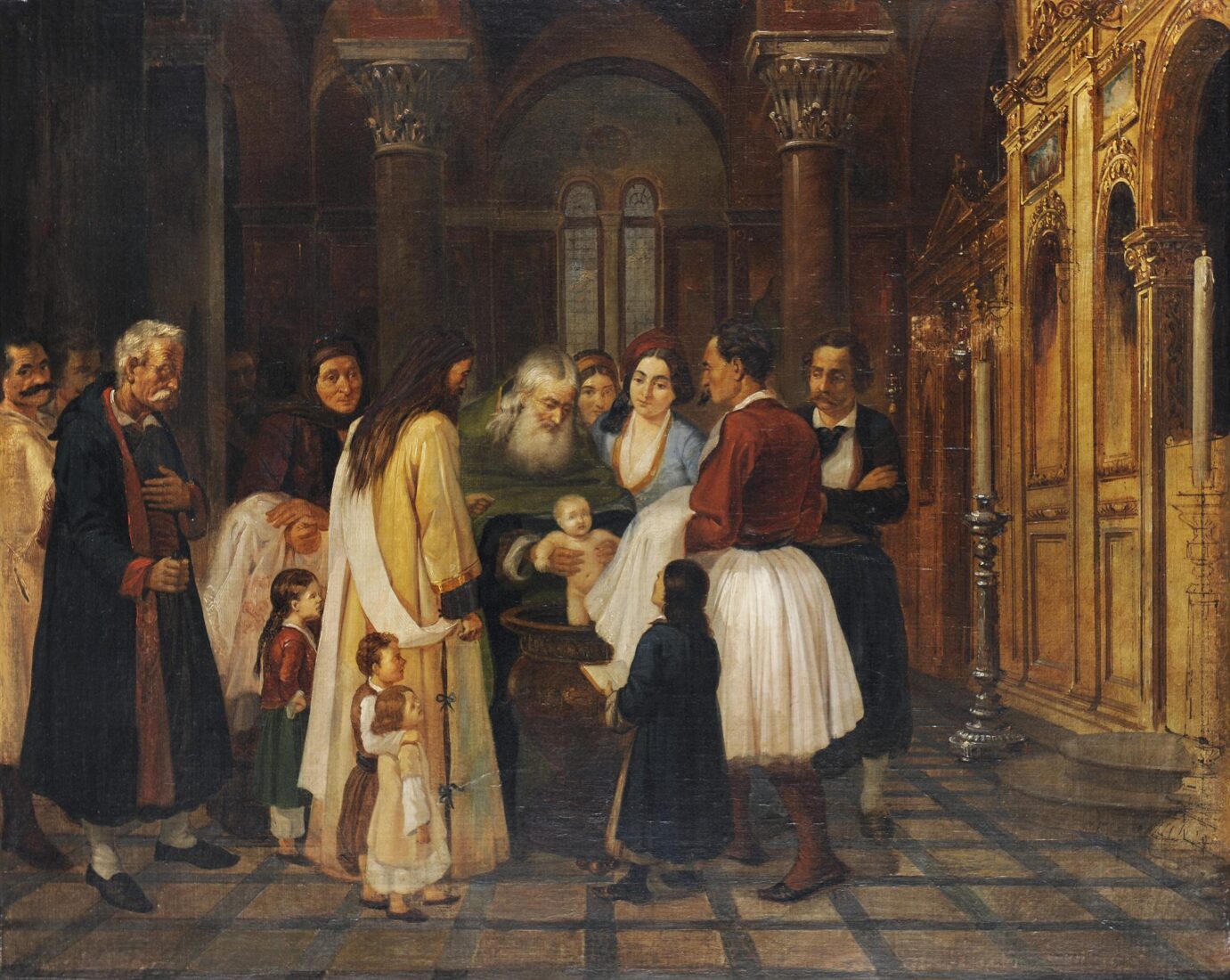
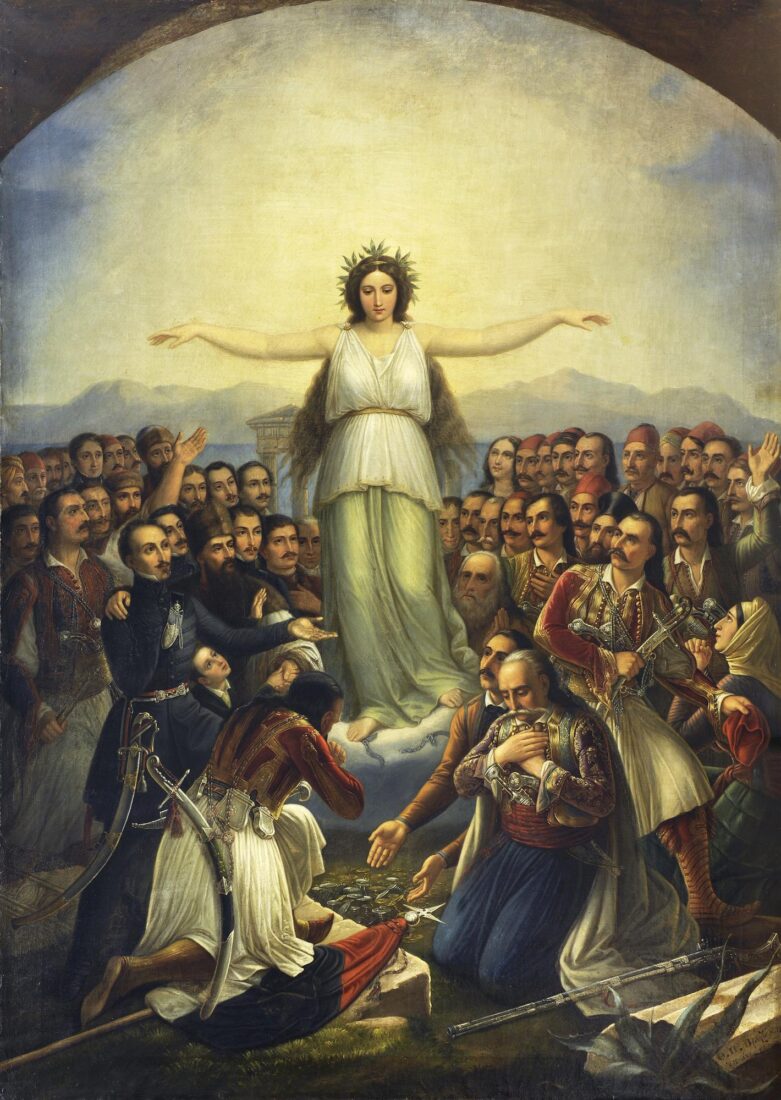
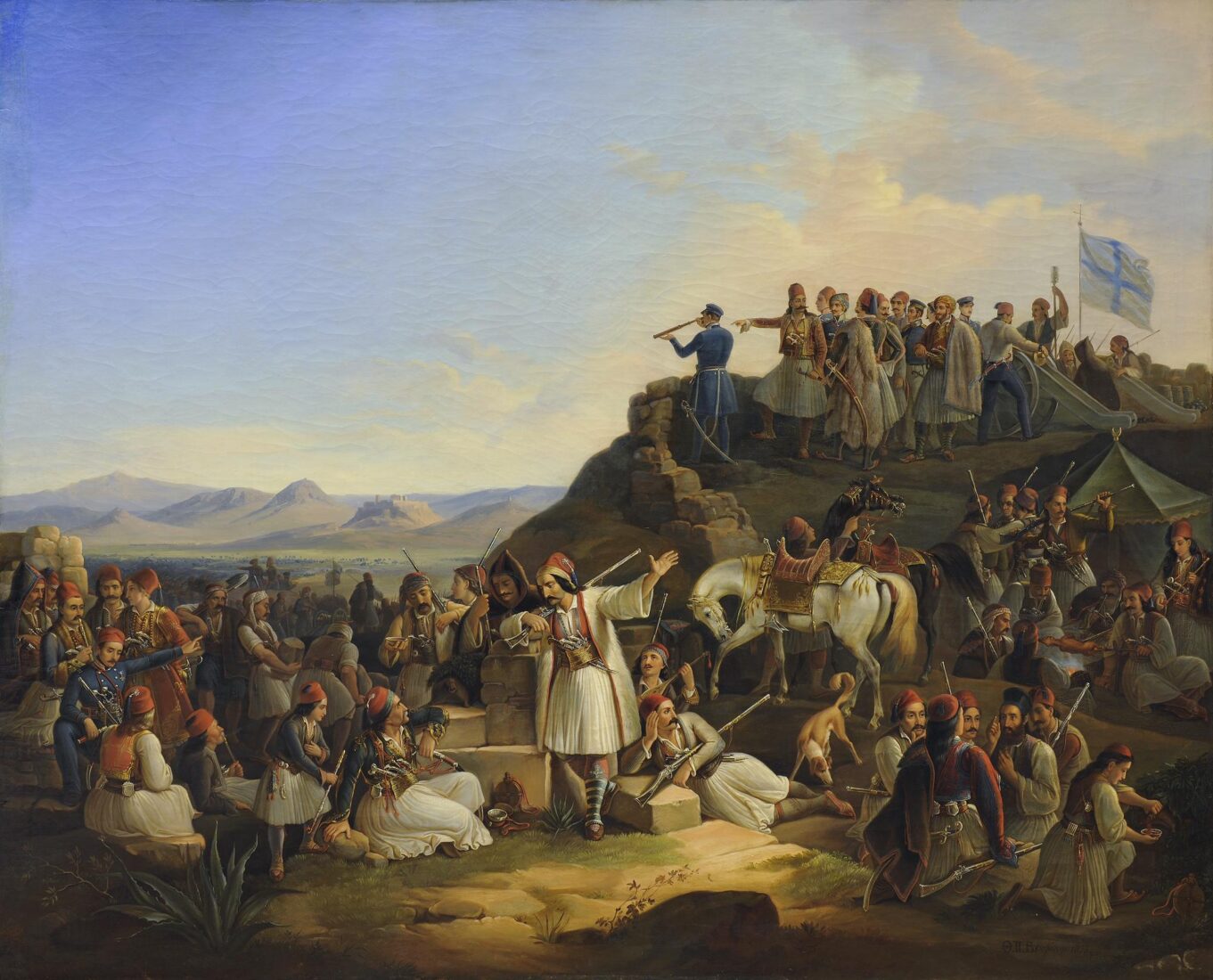
This painting depicts the army camp of General Karaiskakis at Phaliron during Greek preparations to capture the Acropolis, besieged by the Turks, in April 1827. Greeks and philhellenes are arranged along a section in the foreground, while in the mid-ground on the right, the eye is guided towards the hill from which the leading officers of the army survey the battle field. In the background on the left can be seen the Acropolis. Almost in the centre, a Greek is leaning against an ancient marble in an allusion to the heritage of classical Greece. On the right, a priest is blessing the fighters. The officer in the blue uniform on the left is Bavarian philhellene Krazeisen, to whom the Greeks are grateful. He captured for posterity the figures of the 1821 freedom fighters as we know them today. It is from these drawings that Vryzakis sourced the portraits of the fighters on the hill: Karaiskakis, Makrygiannis, Tzavelas, Notaras, the Scot named Gordon, Englishman Hastings and Karl von Heideck, looking towards the Acropolis through a telescope. Heideck, who had first-hand experience of these events, painted the same subject, and Vryzakis quoted his painting much later, in 1855. The Greek flag sways on the top right. The gold-red and brown colours characteristic of Vryzakis’ work are also pre-eminent in this painting. The description blends tension and suspense with release provided by charming genre interludes.
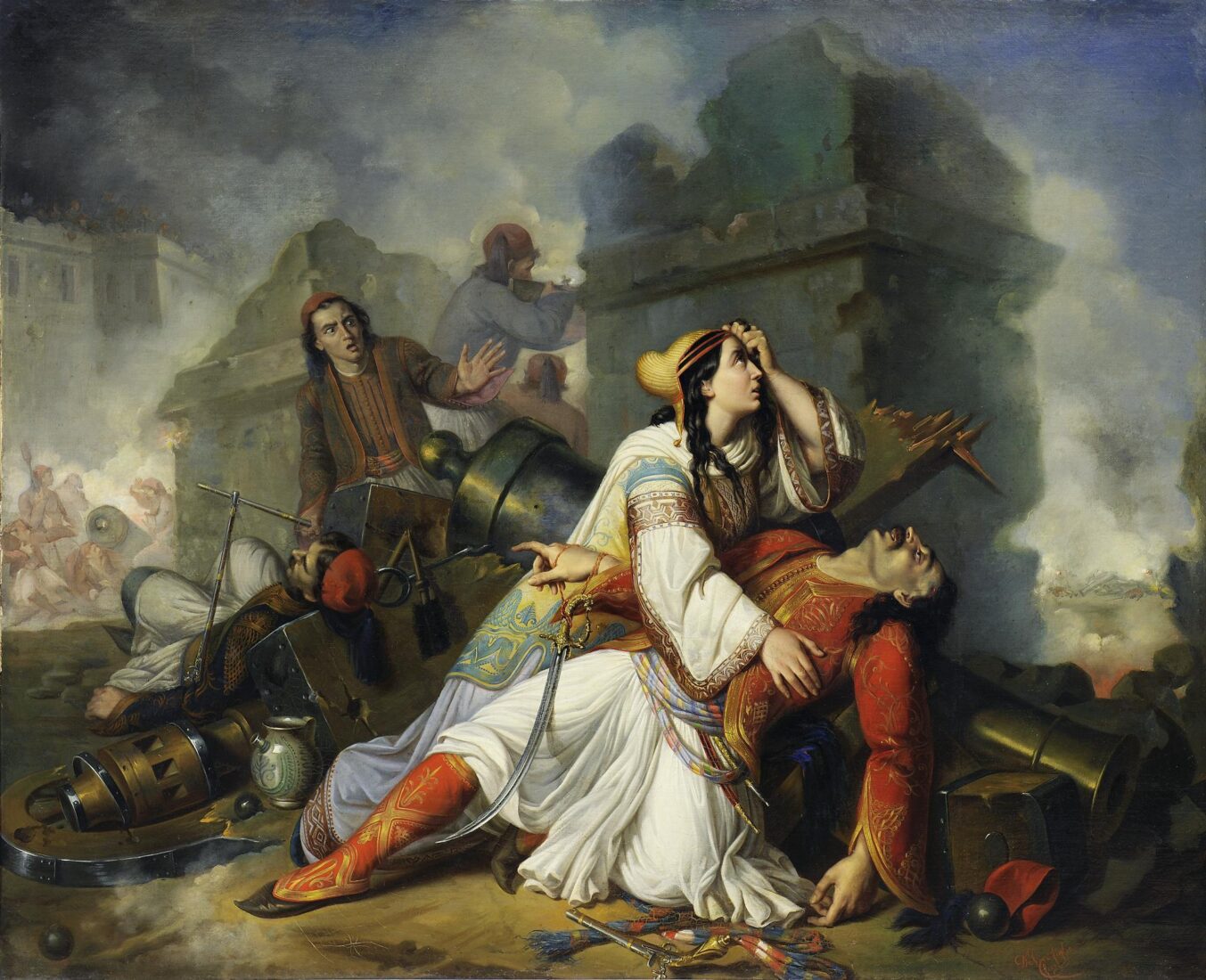
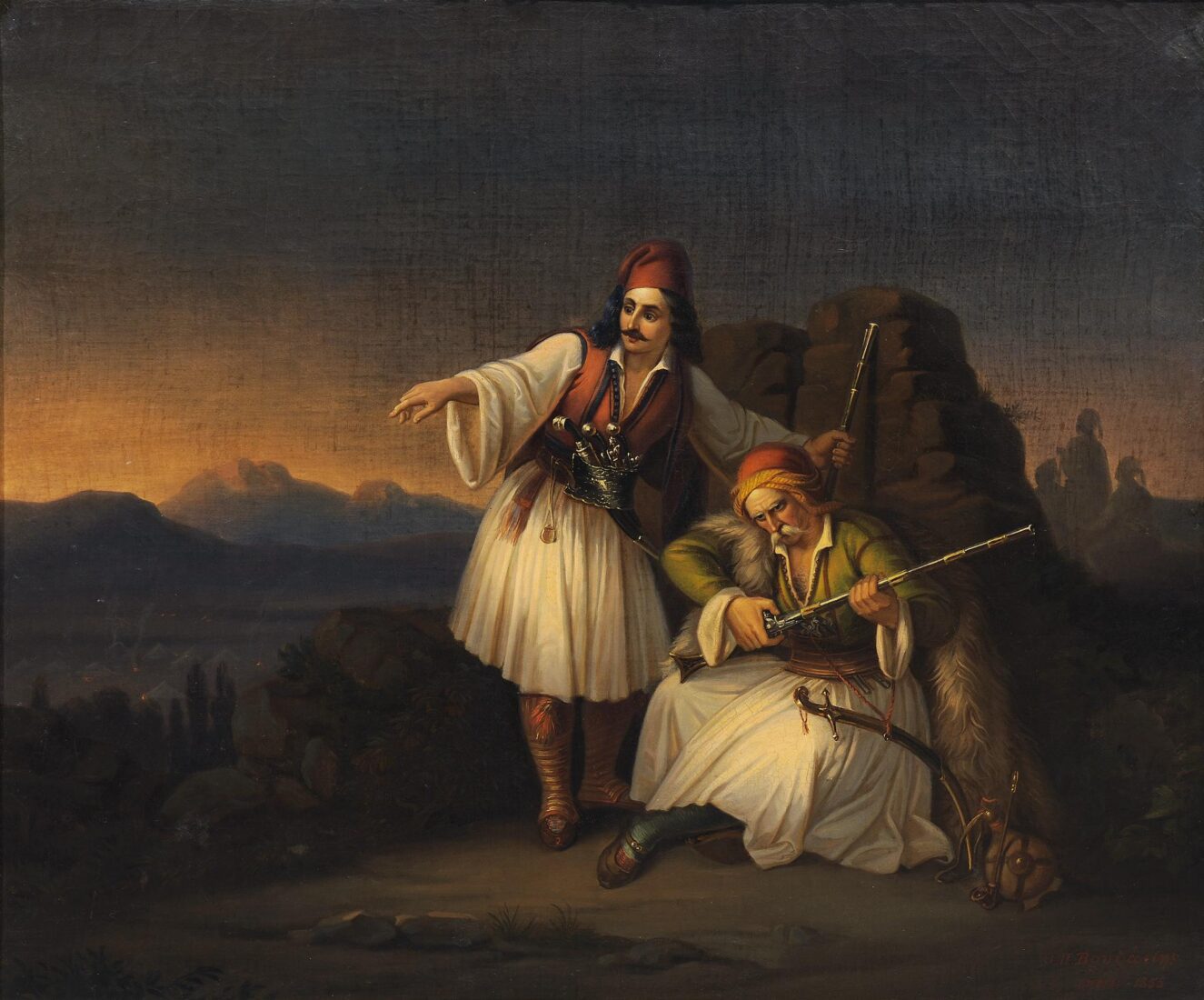
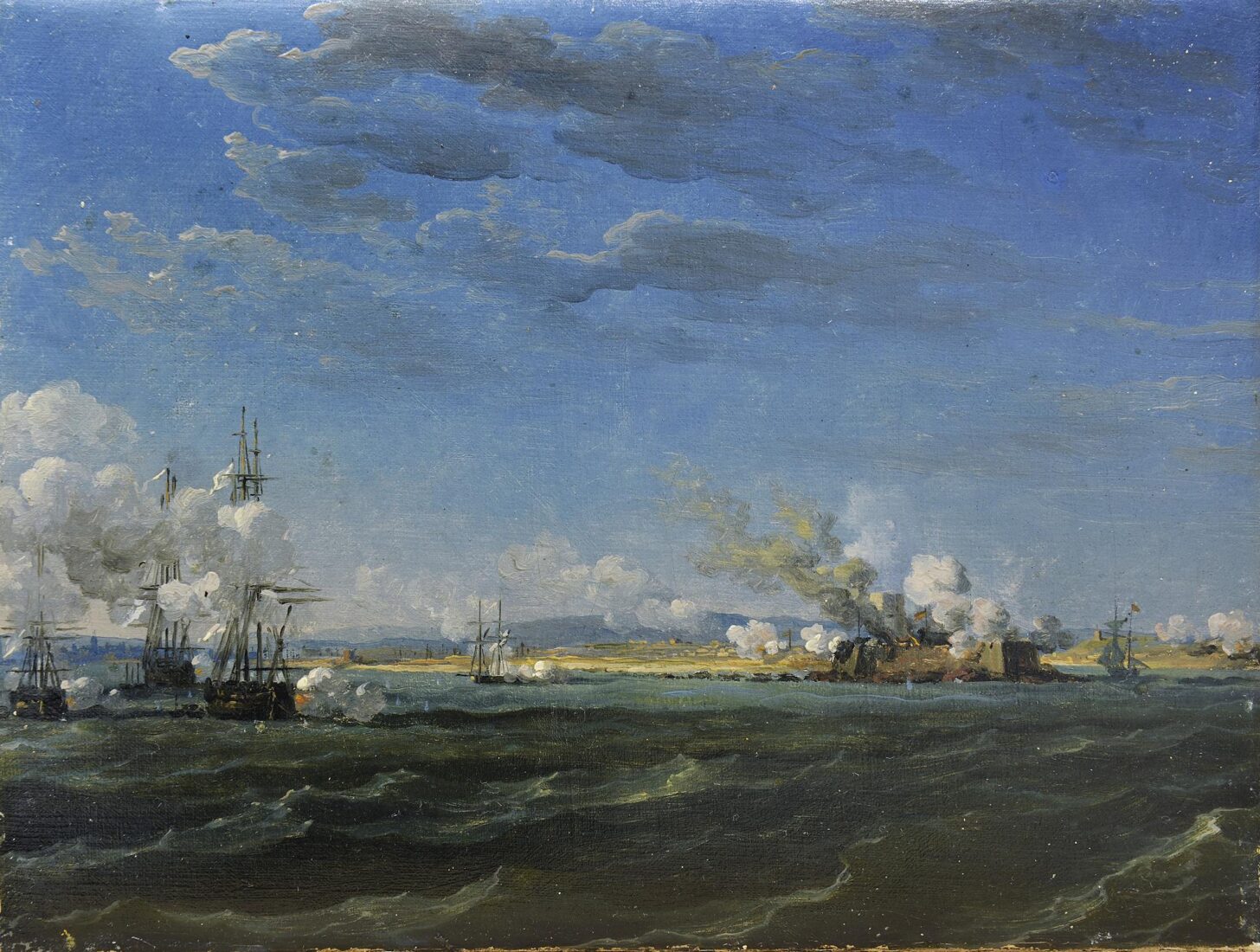
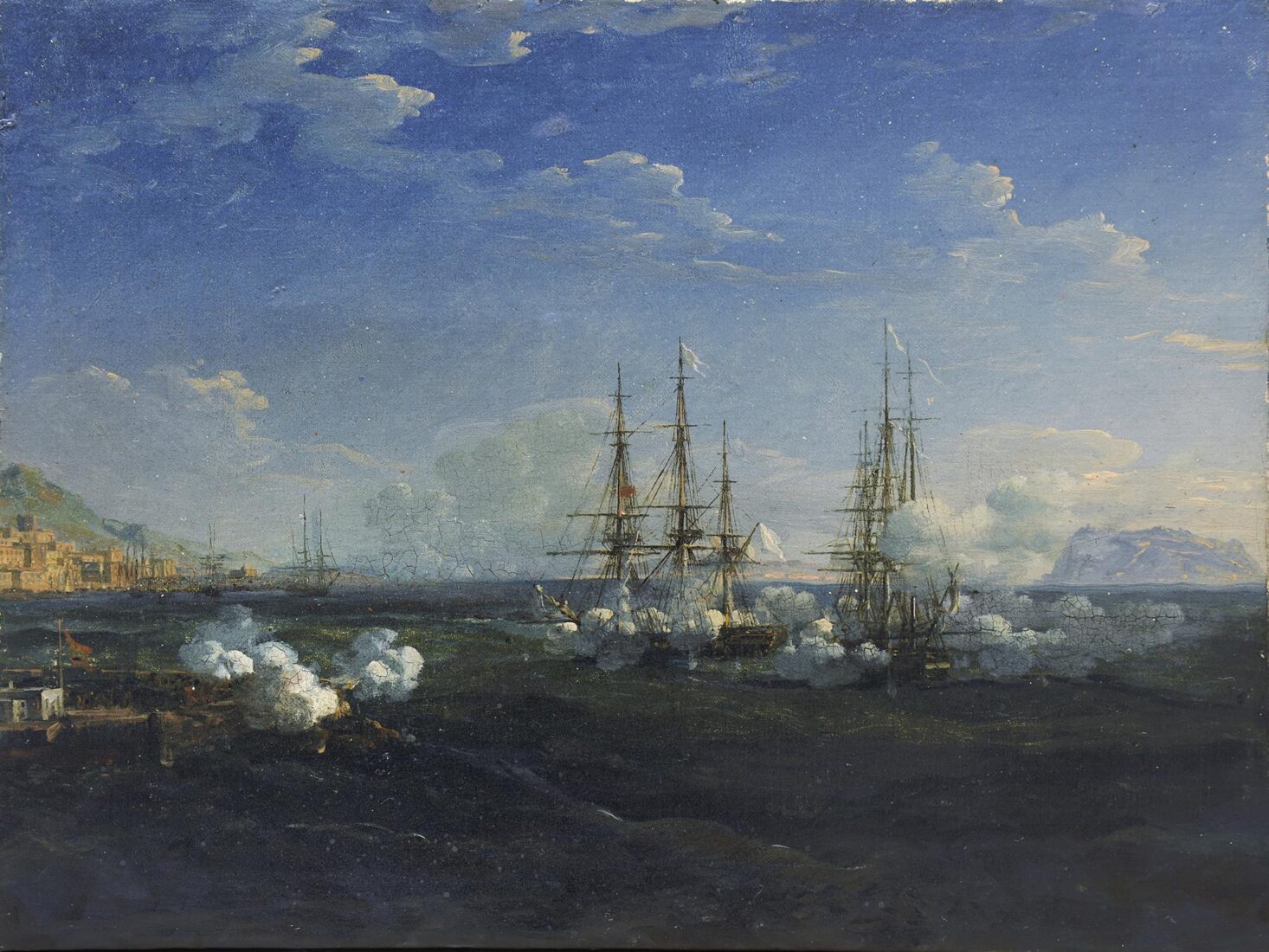
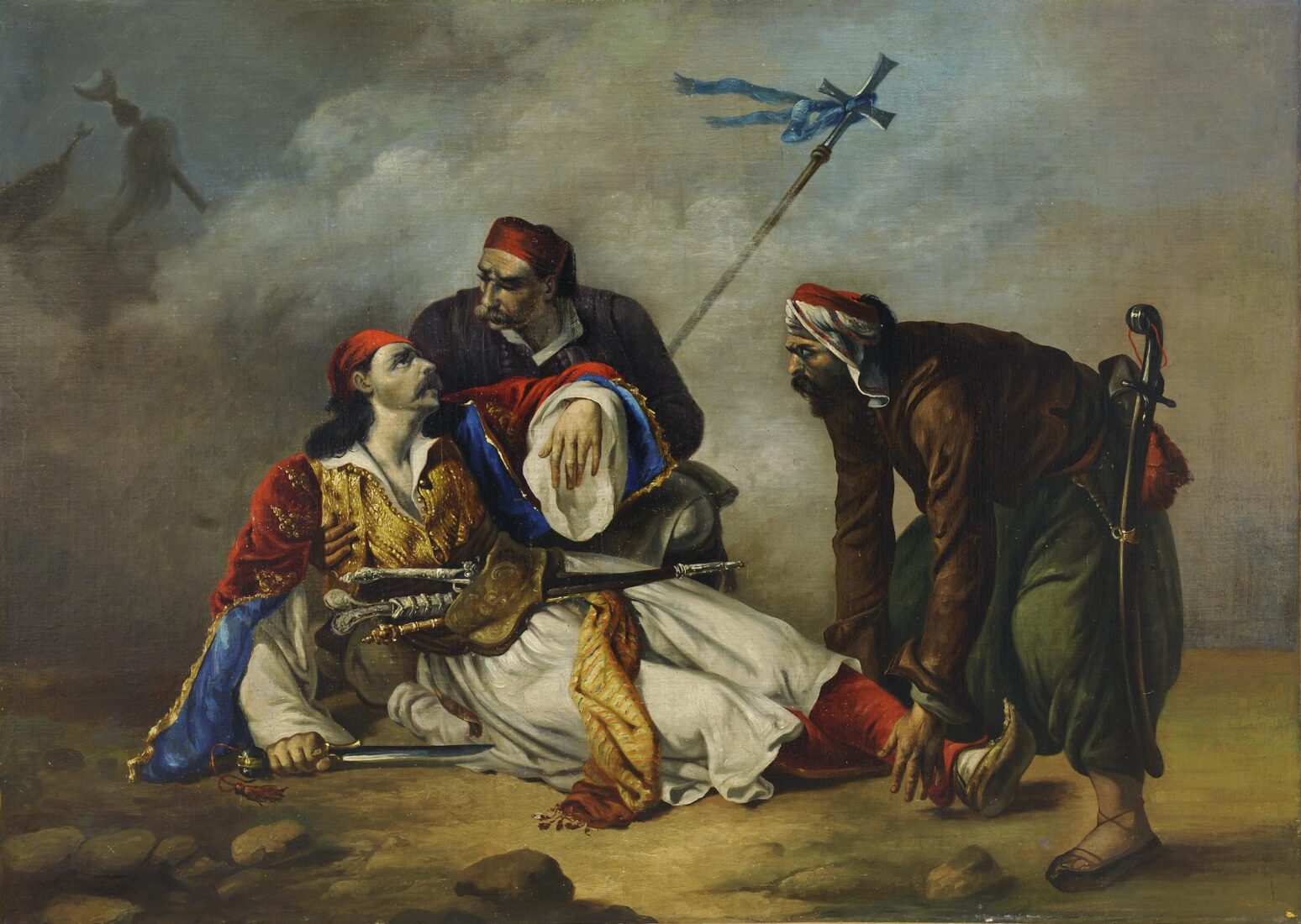
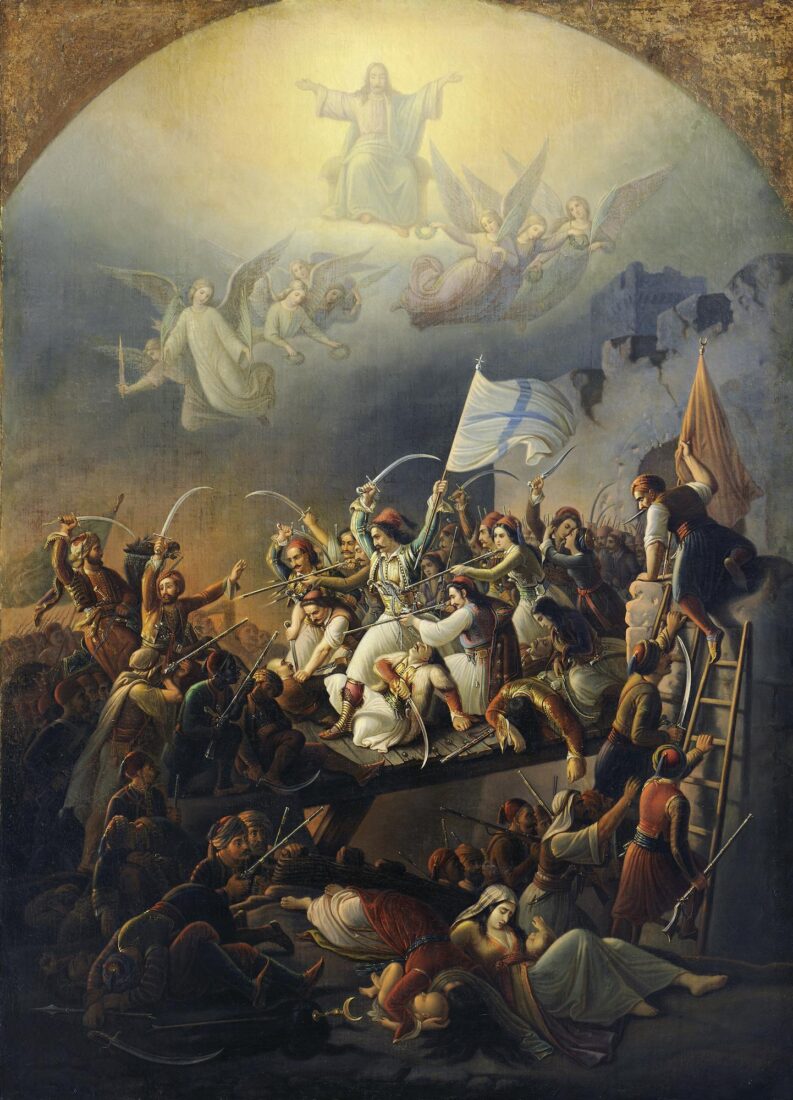
The artist who painted this work, Theodoros Vryzakis, was left an orphan in the War of Independence, when his father was hanged by the Turks. He studied in Munich and became the main exponent of historical painting.
This major painting evokes one of the most tragic and renowned episodes in the Greek struggle for independence – the heroic exodus of the inhabitants of the town of Missolonghi during the night of April 10, 1826. The composition is arranged along a perpendicular axis, without depth, split into two sections: the heavenly and the earthly one. In the heavenly section, on the axis, that is, in the centre of the composition, is seen the enthroned God in a golden cloud, blessing the fighters, while angels with laurel leaves and wreaths are preparing to coronate the heroes. The Greeks believed that their rightful cause enjoyed Christ’s blessing. In the earthly section, on a wood bridge, Greek fighters are seen brandishing their swords, storming out of the wall gate. One of them is waving in his left hand the Greek flag with the cross on the pole. Some have already been wounded. Women and children follow. Mothers and children have fallen in the ditch underneath the bridge. Some are already dead, others lie dying. The fully armed Turks are waiting for the heroic fighters. Some of them are climbing up the walls on a ladder. Uproar, tension, drama prevail. It is as if we could almost hear the noise of weapons and the cries of the wounded. The painter has depicted the scene in great accuracy and meticulousness. This painting is romantic in spirit but academic, calligraphic, careful in implementation. A brown and gold tonal palette of black, white and red prevails.
